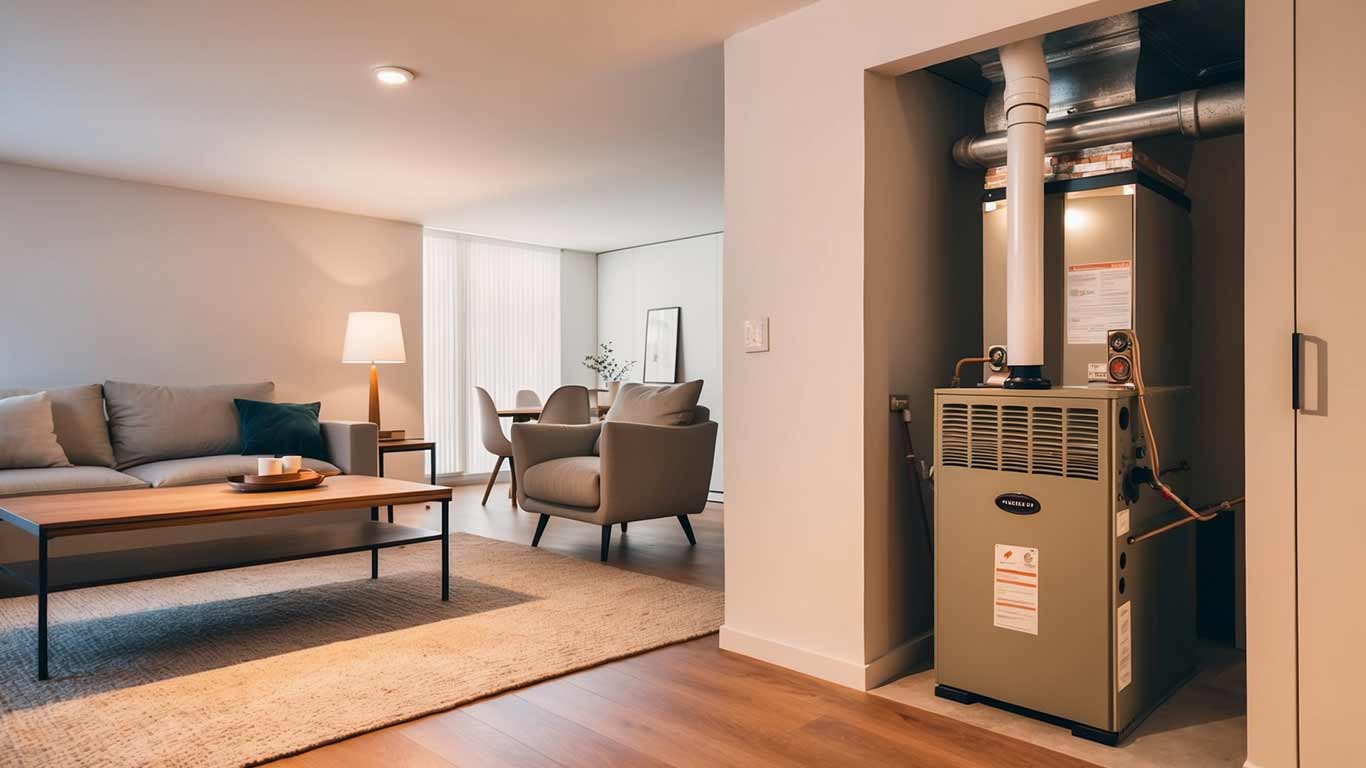As temperatures drop, your HVAC system becomes the backbone of your home’s comfort. But some preparation is essential to keep things warm and cozy all season. Taking proactive steps can help prevent unexpected heating unit breakdowns, reduce energy costs, and keep your system running efficiently.
In this guide, we will discuss ways to prep your HVAC system so you can enjoy a comfortable home without worrying about costly repairs or high heating bills.
Replace or Clean Air Filters of Your HVAC Unit
When HVAC air filters become clogged with dust and debris, they restrict airflow, causing your heating system to work harder than necessary to circulate warm air. This extra strain can lead to higher energy bills, reduced heating efficiency, and potential system breakdowns.
For optimal performance, check your filters once a month during the colder season and replace them at least every three months or more frequently if you have pets or allergies. With clean air filters, you can benefit from improved indoor air quality, reduce allergens, and ensure your HVAC operates at peak efficiency.

Check HVAC Thermostat Setting
Check the HVAC thermostat is accurately reading the indoor temperature and responding to changes. If you notice any discrepancies, recalibrate them or consider replacing them if they are outdated.
For those still using manual thermostats, consider upgrading to a programmable or smart thermostat. These modern thermostats allow you to schedule temperature adjustments based on your daily routine, automatically lowering the heat when you’re away or asleep and raising it when you’re home and active.
A properly set thermostat will reduce wear on your HVAC unit and create a comfortable, efficient home environment all winter.
Seal the HVAC Ductwork
Leaky ductwork is a common issue that impacts the functionality of HVAC units. When ducts have gaps or cracks, warm air escapes before it reaches your living spaces, causing the HVAC unit to work harder to maintain a comfortable temperature. This also results in high energy bills and uneven heating.
Inspect your ductwork for visible leaks, gaps, or loose connections to improve efficiency. Joints and seams are common problem areas. Seal leaks with aluminum foil tape or duct mastic, a special sealant for HVAC ducts. To reduce heat loss, wrap ductwork in unconditioned spaces, like attics or basements, for added insulation.
Clear HVAC Vents and Registers
Obstructed vents and registers can prevent your HVAC system from distributing warm air, leading to uneven heating and reduced efficiency. Inspect all vents and registers throughout your home to ensure they are fully open and free of blockages like furniture, curtains, or rugs.
Additionally, dust and debris can accumulate around these areas, reducing air quality, so regularly vacuuming and dusting around vents helps prevent buildup. Keeping vents and registers open and clean ensures better airflow, lower energy costs, and a cozier home during the colder months.
Insulate HVAC Pipes
Insulating exposed HVAC pipes can help your system retain heat, improve efficiency, and prevent the pipes from freezing in extremely cold weather. When pipes aren’t insulated, valuable heat can escape, causing your HVAC system to work harder and increasing energy costs. This is especially true for pipes in unheated spaces like basements, attics, or crawl spaces, where cold air can quickly cool them down.
To insulate HVAC pipes, use pipe insulation sleeves or wraps that fit snugly around the pipes. Make sure to cover any joints or bends thoroughly to prevent gaps. This added insulation layer helps keep the warm air moving efficiently through your system, reduces the workload on your heating unit, and prevents frozen pipes.
Test Safety Features of Your HVAC Unit
It is important to check the safety features of your HVAC unit, especially if you are using a gas-powered furnace. Start by testing the carbon monoxide detectors throughout your home to ensure they work correctly. These detectors are essential for alerting you to dangerous gas leaks if the furnace malfunctions.
Additionally, check the HVAC system’s built-in safety features, such as the automatic shut-off and high-limit switches, which prevent the unit from overheating. If your system includes emergency shut-off controls, verify they are easily accessible and operational.
Clean Around the Furnace and Heat Pump
Dust, dirt, and debris can accumulate around your furnace and heat pump, restricting airflow and causing the system to work harder to maintain the desired temperature. This buildup can also pose a fire hazard, especially if flammable items are stored too close to the furnace.
Make it a habit to regularly vacuum and dust around the furnace and heat pump, especially before winter. Clear away any objects, boxes, or cleaning supplies that may be stored near these units, ensuring at least a two-foot clearance for optimal airflow.
Schedule a Professional HVAC Inspection.
A professional HVAC inspection includes a thorough check of your unit to identify potential issues that could lead to breakdowns during the colder months. They’ll inspect components such as the blower motor, heat exchanger, and burners, ensuring everything functions safely and efficiently.
During the inspection, the technician may also clean and lubricate key parts, remove debris or dust buildup, and check for minor repairs that could prevent more significant problems later. Regular HVAC maintenance keeps your HVAC unit in optimal condition, extends its lifespan, and helps avoid costly repairs.
Stay Warm This Winter with Direct Home Services
Contact Direct Home Services for a routine HVAC inspection and maintenance. We are available 24 hours a day to keep your home comfortable and your heating system in top condition all season.
Call 860-339-6001 to book HVAC service.


